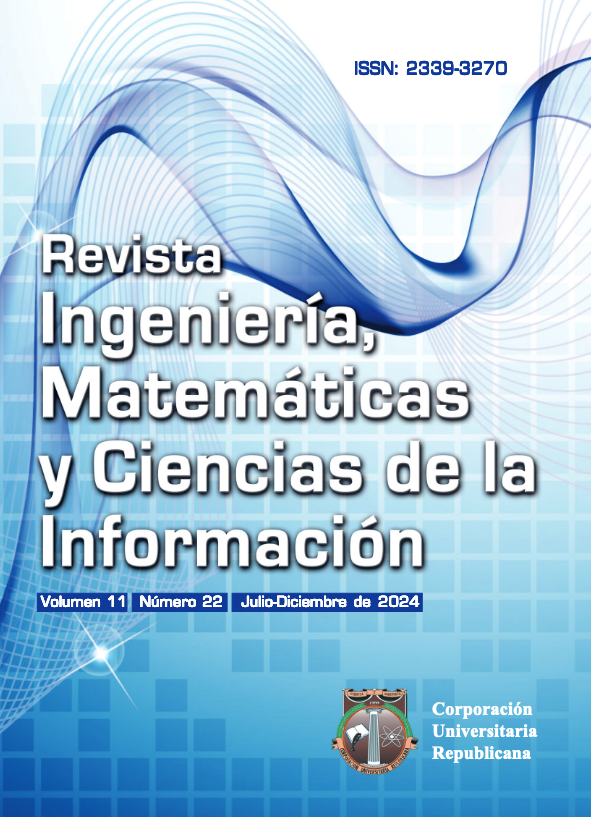Design of a transformative social innovation model for agroindustries: the case of solanum tuberosum in Zipaquirá Cundinamarca
DISEÑO DE UN MODELO DE INNOVACIÓN SOCIAL TRANSFORMATIVA PARA LAS AGROINDUSTRIAS: CASO SOLANUM TUBEROSUM EN ZIPAQUIRÁ CUNDINAMARCA

This work is licensed under a Creative Commons Attribution 4.0 International License.
![]()
Esta obra está bajo una licencia internacional
Atribución/Reconocimiento 4.0 Internacional
Show authors biography
The municipality of Zipaquirá is characterized for being a territory of great economic importance in the department of Cundinamarca, due to the richness of its natural resources, which provide a prosperous environment for agricultural production. In the particular case, the municipality is catalogued for being one of the largest producers of potato (Solanum tuberosum) in its different varieties. This situation has given rise to social, economic and environmental problems. Given that the population presents social inequality, generated by the commercialization of its products below the real prices.
Considering its extensive and diversified agricultural production system, compared to other municipalities in the region, there has been a significant increase in the commercialization and use of agrochemicals. This trend has had a negative impact on both the economy of small producers and the municipality's environmental resources, including water, soils, and local flora and fauna. Taking into account these problems, analyses were carried out with the objective of proposing solutions to the potato-growing sector, in collaboration with transformative social innovation and the multilevel perspective (MLP).
The research began with the development of the characterization instrument that includes the variables of the model with direct impact on the sector. In collaboration with the Secretary of Rural Development and Environment of Zipaquirá, surveys were carried out with potato growers. These responses, of a qualitative nature, were analyzed with the help of NVIVO software. The results of this study highlight the strong interrelationship between the three fundamental variables of the transformative social innovation project: landscape, niche and regime. This comprehensive approach provides a complete and deep understanding of the sector.
Article visits 145 | PDF visits 121
Downloads
- F. W. Geels, Multi-level Perpective on System Innovation: Relevance for industrial Transfor- mation, ResearchGate, 2006.
- S. Londoño Montoya y C. M. Álvarez Giraldo, Teo- ría y casos de innovación social. caracterización de Manizales más una experiencia de empren- dimiento de alto impacto en colombia, 2014.
- Upra, El sector agropecuario empieza a repuntar con una variació en el PIB de 0.3% durannte el pri- mer trimestre, 2023.
- Mincit, Perfiles economicos departamentales, Colombia potencia de la vida, 2023.
- Agronet. Cundinamarca, Boyacá, Nariño y Antio- quia, representan el 90% de la producción de papa. Colombia potencia de la vida, 2023.
- QSR International, Nvivo: O software n 1o para análise qualitativa de dato. 2021.
- J. M. T. López, “La transferencia de conocimiento como proceso: de la universidad al sector educati- vo. una mirada desde la pedagogía,” Ed. Rev. Bole- tín redipe 8 marzo 2019. ISSN 2256-1536, 2019.
- N. K. Denzin, Sociological Methods: a Source Book, Aldine Pub. Chicago, 1970.
- G. Campos-Naranjo, J. I., Forero-Cantor, Análisis del modelo de transferencia de conocimiento en el sector palmífero colombiano, Tecnura, vol. 27, Num 26, 2023, doi: https://doi.org/10.14483/2248 7638.19071. [10] Organización de las Naciones Unidas para la Alimentación y la Agricultura, Plan integral de desarrollo agropecuario y rural con enfoque territorial, 2021.
- A. Cairo, “Visualizar” 2018, [Online]. https:// es.scribd.com/document/368351231/Visualizar- Alberto-Cairo-pdf.
- R. I. Parra-Peña, Análisis de la productividad del sector agropecuario en Colombia y su impacto en temas como: encadenamientos productivos, soste- nibilidad e internacionalización, en el marco del programa Colombia más competitiva, 2021.
- H. N. Morales, J. Garnica González, La Creación de Valor Compartido y la Innovación Social como detonantes del desarrollo económico ante la competitividad global, 2015.
- Superintendencia de Industria y Comercio, “Estu- dios Económicos”, 2020.
- S. Londoño Montoya, Emprendimiento e innova- ción social: Experiencia de jóvenes rurales en CaldasColombia, p. Revista de Ciencias Sociales (Ve), XXVII Especial, 2021.
- Á. Carvajal, Tecnologías para el desarrollo soste- nible, 2016.




